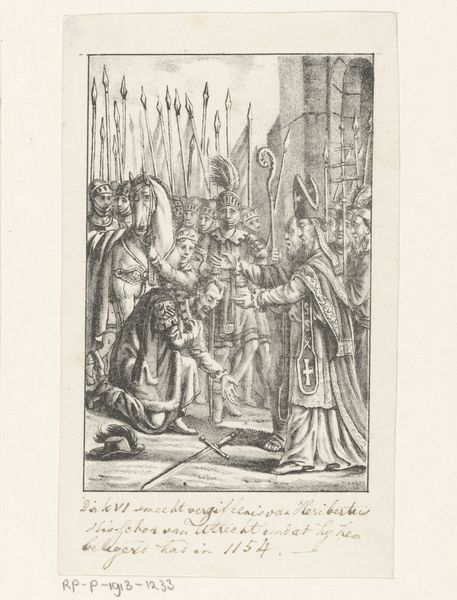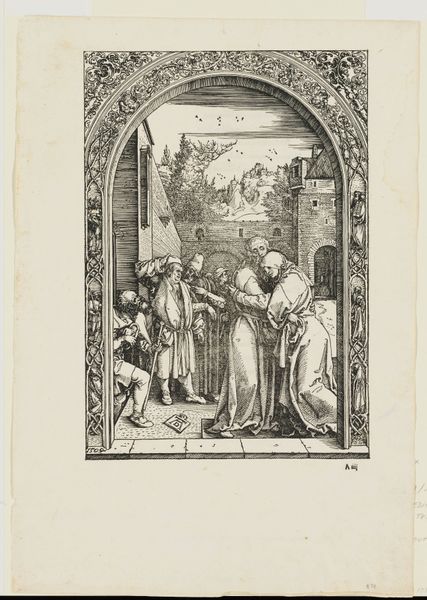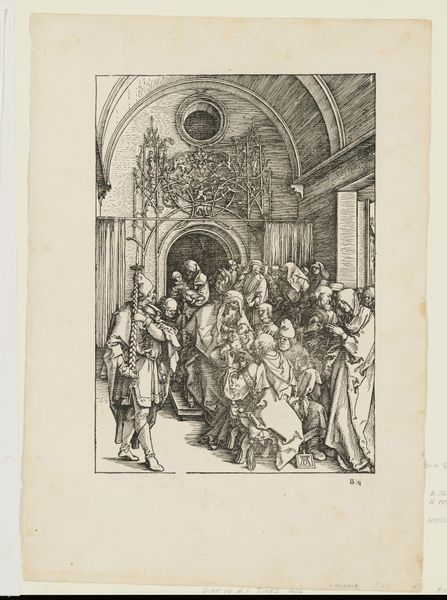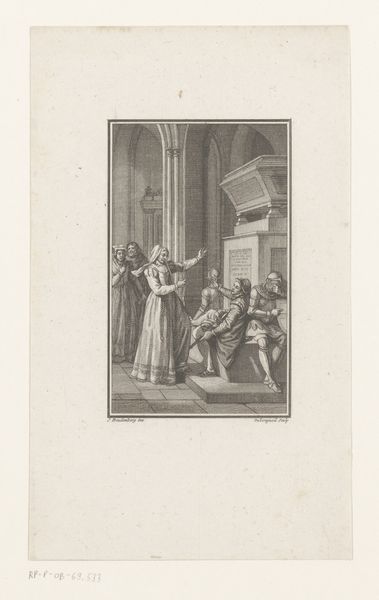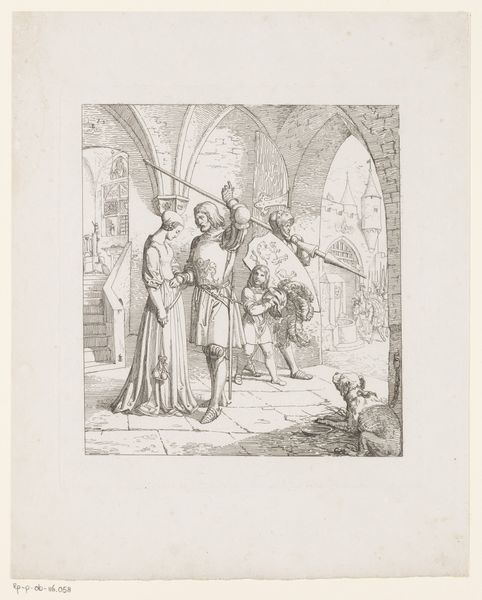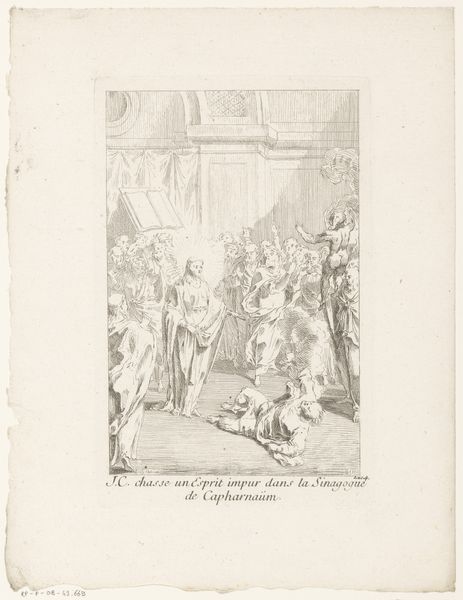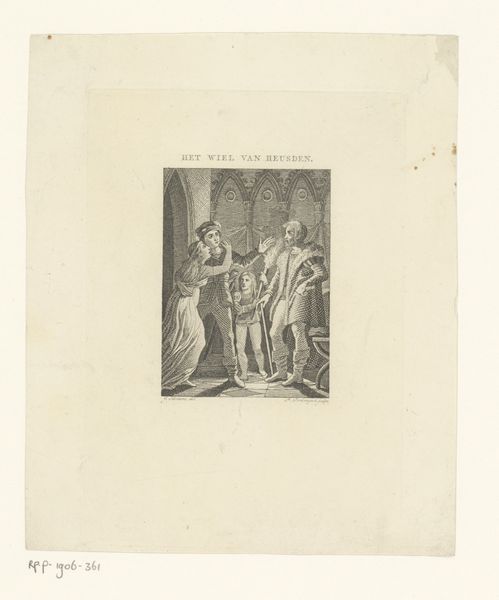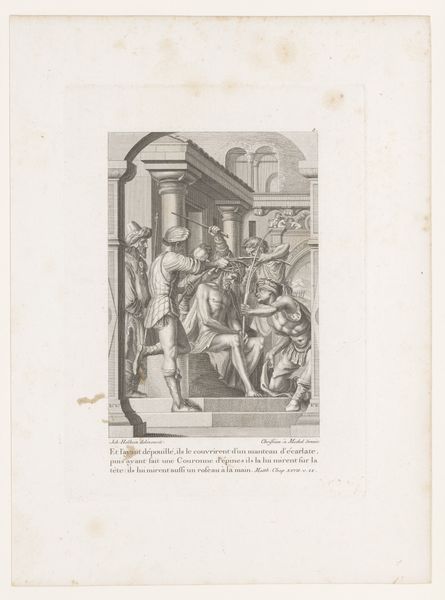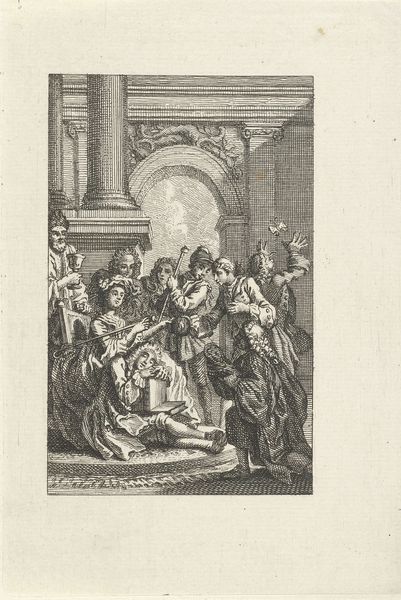
print, engraving
#
medieval
#
narrative-art
# print
#
old engraving style
#
figuration
#
romanticism
#
genre-painting
#
history-painting
#
engraving
Dimensions: height 233 mm, width 208 mm
Copyright: Rijks Museum: Open Domain
Editor: Here we have Joseph von Führich's "Biechtende en biddende mensen rond de biechtstoel," an engraving from 1840 at the Rijksmuseum. It feels incredibly detailed, almost like a miniature world etched onto paper. What compositional elements stand out to you in this work? Curator: The composition is fascinating precisely due to that etched detail you noted. Von Führich masterfully uses line to create depth and texture. Notice the way the lines vary in thickness to define form and suggest light and shadow. How does the artist manage to organize so many figures within this rather small picture plane? Editor: I see. The repetition of line leads our eyes back and forth but not to a distinct focal point. There is a clear use of diagonals directing your eye around the whole work to see each element. It is carefully orchestrated. Does that affect the overall impression, do you think? Curator: Precisely. The artist refrains from employing any sharp lines. I suggest that the composition, being so evenly distributed, speaks to a leveling in a very literal way of society before confession. Editor: That makes so much sense. Because it's not a painting, there's obviously no color. I notice now there are many contrasts with lights and darks and soft and crisp lines throughout. Curator: Yes, notice how it affects the tonality, and how successfully the engraver balances these contrasting marks across the work. The structural use of engraving allows a sophisticated play between suggestion and visual resolution, doesn't it? Editor: Absolutely. Thank you so much, seeing that really unlocked this work for me. Curator: A fruitful observation on your part, the power of simple marks coming together to create depth.
Comments
No comments
Be the first to comment and join the conversation on the ultimate creative platform.

